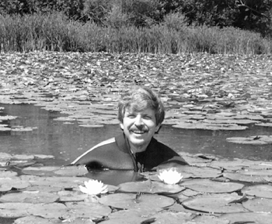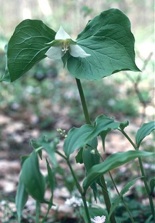Thomas J. Givnish
Henry Allan Gleason Professor of Botany and Environmental Studies
Ph.D. (1976) Princeton University • 315 Birge Hall • 608-262-5718 • givnish@wisc.edu
Plant ecology and evolution; adaptive radiation and molecular systematics;
phylogeography; physiological ecology; landscape dynamics

Historiical bogeography - the geographic pattern of differentiation within species (phylogeography) or closely related taxa - is an important emerging field, bridging population processes with phylogeny and biogeography.
Nisa Karimi and I are studying phylogeography and the spatial scales of genetic differentiation in the Bay Area clade of Calochortus, to determine whether species endemic to serpentine have been derived from within more widely ranging, non-serpentine species, and whether poor seed dispersal has led to genetic differentiation at small spatial scales, culminating in high species diversity, geographic cohesion of lineages, and parallel adaptive radiations in several traits across Calochortus as a whole.
Previously, Terra Theim used AFLPs to examine the geographic scales of genetic differentiation and apparent gene flow in understory species of Psychotria in Panama to confirm the hypothesis that understory tropical trees with fleshy fruits differentiate at small spatial scales – and ultimately contribute a remarkably high fraction of rain-forest tree diversity – because they rely on sedentary forest-interior birds for seed dispersal. The characteristic distance of gene flow in Psychotria was quite short for woody plants, σ = 9-113 m.
Current grad student Patty Chan plans to use RAD-Seq data to estimate σ in species of Darwinia; several species have become differentiated in small areas, restricted to single peaks in the Stirling Range of Western Australia.
Photographs: TOP - Portrait of the scientist as a young man among Nymphaea; sandstone escarpment, Auyán-tepui, one of the many plateaus of the Guayana Shield and home to many narrow endemics; Geissorhiza splendidissima (Iridaceae), member of a species-rich South African genus characterized by seeds with no apparent means of long-distance dispersal, with numerous species having narrow ranges; and Trillium flexipes (Melanthiaceae), a wide-ranging, Midwestern element of the Trillium erectum complex, including several narrow endemics from the southern Appalachians.
© 2021 University of Wisconsin Department of Botany
Last updated: 27 November 2021


